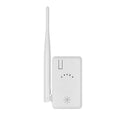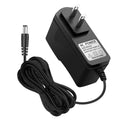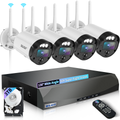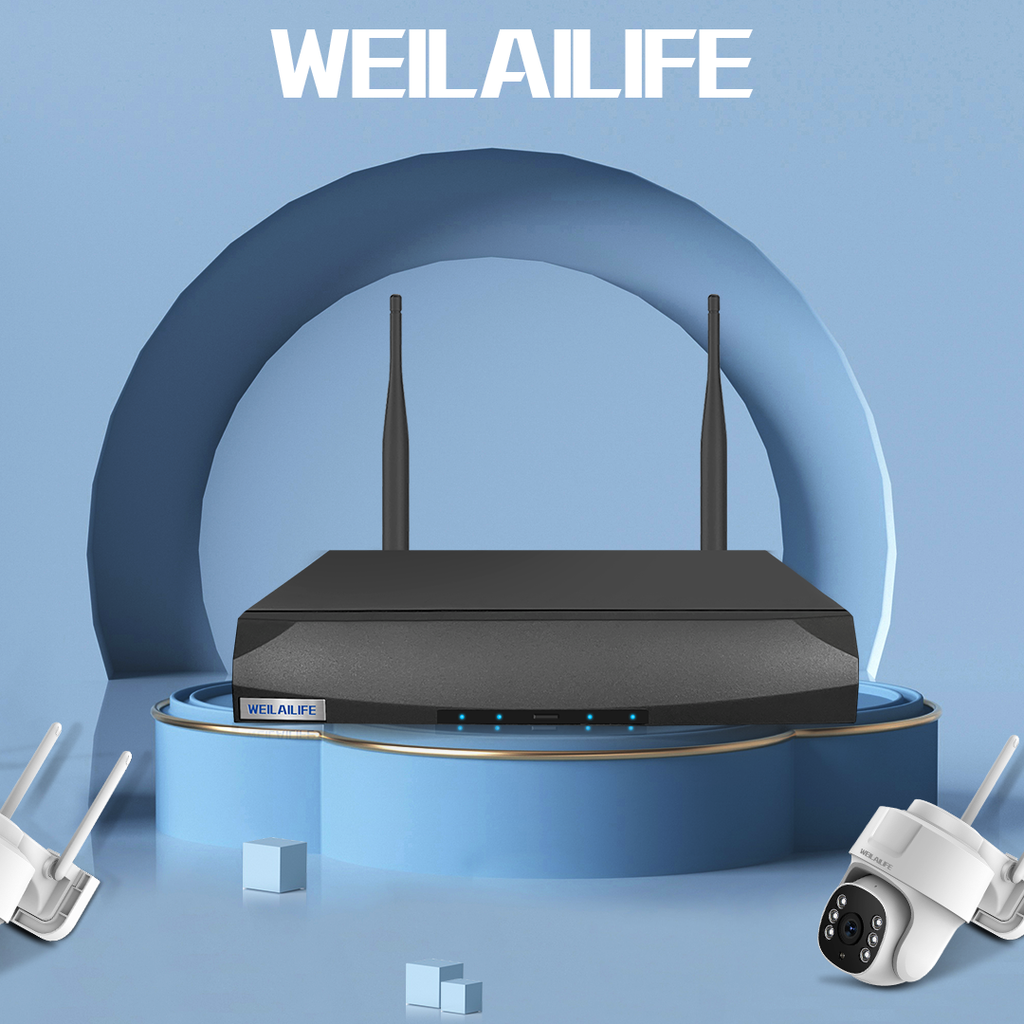WEILAILIFE Brand - A Comprehensive Overview of Surveillance Systems
Surveillance systems have become an essential part of ensuring security and safety in various settings, including homes, businesses, and public spaces. These systems rely on advanced technology to monitor and record video footage, providing real-time displays, video playback, and recording capabilities. In this article, we will explore the key components that make up a surveillance system and their respective functions.
System Main Components:
1.1 NVR (Network Video Recorder):
The NVR is a crucial element of the surveillance system. It serves as the central hub for processing and storing video images captured by the network cameras. Equipped with high-capacity hard drives, the NVR ensures reliable and secure storage of recorded footage, allowing for easy retrieval and review when needed.
1.2 Network Switch:
The network switch plays a pivotal role in transmitting data between various components of the surveillance system. It efficiently manages the flow of network data, enabling seamless communication between the NVR, cameras, and other connected devices.
1.3 Network Cameras:
The network cameras are the eyes of the surveillance system. These high-tech devices are responsible for capturing video footage in the designated area. With features like PoE (Power over Ethernet), some cameras can be powered through the same network cable used for data transmission, simplifying installation and reducing clutter.
1.4 Monitor:
The monitor serves as the primary interface for viewing real-time video feeds and recorded footage. It provides operators with visual access to the surveillance system, facilitating constant monitoring and quick response to any security events.
1.5 Network Cables:
Network cables, particularly Ethernet cables, are essential for transmitting data between the various components of the surveillance system. These cables maintain stable and reliable connections, ensuring smooth data flow and video transmission.
Overview of Functions:
2.1 NVR (Network Video Recorder):
The NVR is responsible for processing, compressing, and storing video data from the network cameras. It supports various recording modes, including continuous, scheduled, and motion-based recording. The NVR's user-friendly interface allows users to manage video playback, configure settings, and access archived footage easily.
2.2 Network Switch:
The network switch ensures efficient data transmission between the NVR, cameras, and other connected devices. Its capacity and speed play a critical role in maintaining a stable and responsive surveillance system.
2.3 Network Cameras:
Network cameras capture high-definition video images of the monitored area. Some advanced cameras offer 4K resolution, allowing for crystal-clear footage with intricate details. PoE cameras eliminate the need for separate power cables, simplifying installation and enhancing flexibility.
2.4 Monitor:
The monitor displays live video feeds and recorded footage from the NVR. It empowers security personnel to monitor activities in real-time and provides visual evidence for post-event analysis and investigation.
2.5 Network Cables:
Reliable network cables ensure seamless data transmission between components, minimizing latency and loss of data packets.
In conclusion, a surveillance system consists of several key components that work together to provide comprehensive security coverage. The NVR handles video processing and storage, network cameras capture high-quality footage, the network switch facilitates data communication, and the monitor offers real-time monitoring capabilities. These components collectively create a robust and effective surveillance solution, making the WEILAILIFE brand a top choice for those seeking reliable and advanced security systems for their homes and businesses.
System Main Components:
1.1 NVR (Network Video Recorder):
The NVR is a crucial element of the surveillance system. It serves as the central hub for processing and storing video images captured by the network cameras. Equipped with high-capacity hard drives, the NVR ensures reliable and secure storage of recorded footage, allowing for easy retrieval and review when needed.
1.2 Network Switch:
The network switch plays a pivotal role in transmitting data between various components of the surveillance system. It efficiently manages the flow of network data, enabling seamless communication between the NVR, cameras, and other connected devices.
1.3 Network Cameras:
The network cameras are the eyes of the surveillance system. These high-tech devices are responsible for capturing video footage in the designated area. With features like PoE (Power over Ethernet), some cameras can be powered through the same network cable used for data transmission, simplifying installation and reducing clutter.
1.4 Monitor:
The monitor serves as the primary interface for viewing real-time video feeds and recorded footage. It provides operators with visual access to the surveillance system, facilitating constant monitoring and quick response to any security events.
1.5 Network Cables:
Network cables, particularly Ethernet cables, are essential for transmitting data between the various components of the surveillance system. These cables maintain stable and reliable connections, ensuring smooth data flow and video transmission.
Overview of Functions:
2.1 NVR (Network Video Recorder):
The NVR is responsible for processing, compressing, and storing video data from the network cameras. It supports various recording modes, including continuous, scheduled, and motion-based recording. The NVR's user-friendly interface allows users to manage video playback, configure settings, and access archived footage easily.
2.2 Network Switch:
The network switch ensures efficient data transmission between the NVR, cameras, and other connected devices. Its capacity and speed play a critical role in maintaining a stable and responsive surveillance system.
2.3 Network Cameras:
Network cameras capture high-definition video images of the monitored area. Some advanced cameras offer 4K resolution, allowing for crystal-clear footage with intricate details. PoE cameras eliminate the need for separate power cables, simplifying installation and enhancing flexibility.
2.4 Monitor:
The monitor displays live video feeds and recorded footage from the NVR. It empowers security personnel to monitor activities in real-time and provides visual evidence for post-event analysis and investigation.
2.5 Network Cables:
Reliable network cables ensure seamless data transmission between components, minimizing latency and loss of data packets.
In conclusion, a surveillance system consists of several key components that work together to provide comprehensive security coverage. The NVR handles video processing and storage, network cameras capture high-quality footage, the network switch facilitates data communication, and the monitor offers real-time monitoring capabilities. These components collectively create a robust and effective surveillance solution, making the WEILAILIFE brand a top choice for those seeking reliable and advanced security systems for their homes and businesses.









